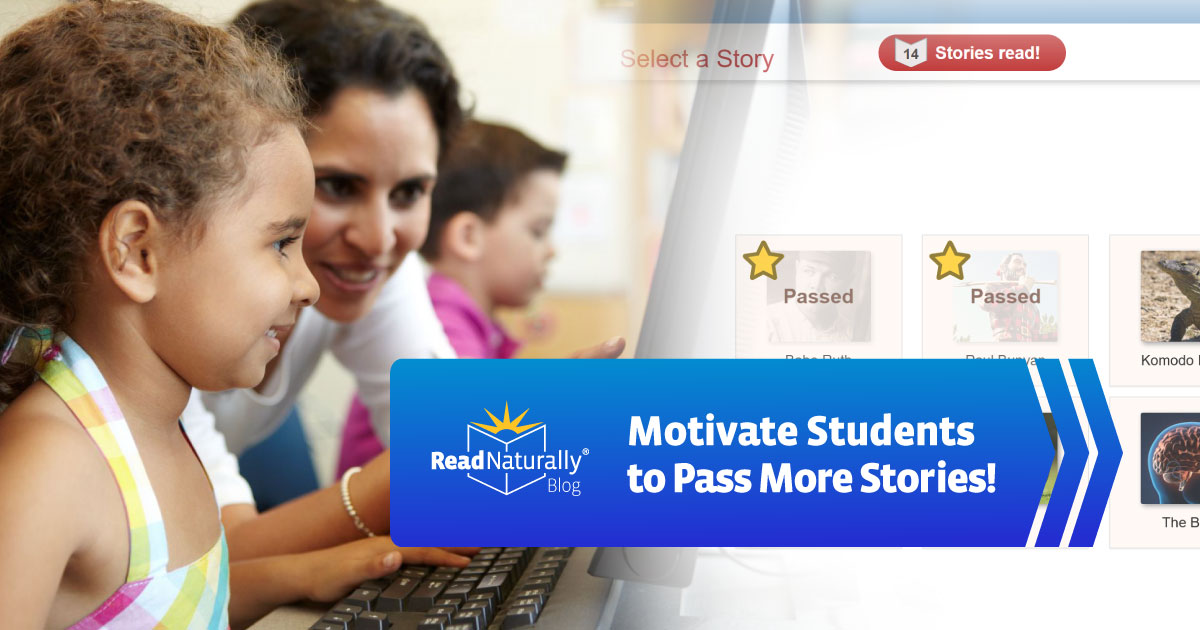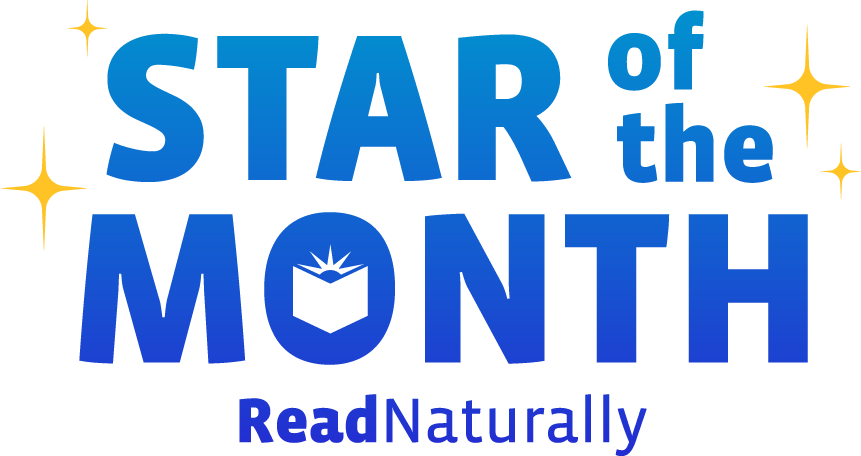 After analyzing over 30 years of Read Naturally data, we know this for sure: The more stories students pass, the more they improve. The quickest path to reading competency is to successfully complete as many stories as possible while maintaining accuracy and comprehension. And yet, you probably have a few students who prefer to work at a leisurely pace--unconcerned with how many stories they're passing each week. How can you motivate these students to increase the number of words and stories they read?
After analyzing over 30 years of Read Naturally data, we know this for sure: The more stories students pass, the more they improve. The quickest path to reading competency is to successfully complete as many stories as possible while maintaining accuracy and comprehension. And yet, you probably have a few students who prefer to work at a leisurely pace--unconcerned with how many stories they're passing each week. How can you motivate these students to increase the number of words and stories they read?
I've trained teachers in this program for the past two decades, and I've worked in reading labs with countless students. In that time, I've collected a few tips and tricks. Here are my favorite ways to motivate students to pass more stories:
- The Point System. This good old-fashioned incentive program can yield great results. Give students a certain number of points every time they pass a story--for example 10 points per story. When they reach a certain number of points--for example, 100 points--they earn a reward. Younger students love small prizes like stickers. Older students are often motivated by the chance to have greater autonomy within the program (learn more about this in my next tip). The number of points earned by each student can be public or private depending on what works best for your specific group of students. Either way, don't underestimate the power of a few arbitrary points. Who doesn't love to earn points? Be sure to verbally recognize your students' achievements, too. You will get the best results if you pair point distribution with well-deserved verbal praise.
- Performance-Based Independence. When students can move mostly independently through the Read Naturally program, they can progress more quickly. Independent cold timings and a reduced number of read alongs are two things that can help accelerate the process for students who are ready. Frame these things as rewards students can earn.
For cold timings, start by allowing students to hold the mouse and click on their own errors. Work toward letting them conduct the entire timing by themselves if they are ready. Celebrate their competency as they demonstrate it. Eventually, let them complete this step without you there. When they don't need to wait for your assistance in this step, they can work at a faster pace. For students doing independent cold timings, we recommend doing one teacher-required cold timing every other week. This ensures that the teacher will have accurate data points from which to monitor performance. Additionally, the first few cold timings in a level should be done with a teacher so that you have an accurate data point at the beginning of the intervention and you can teach the students how to do it properly. Note that if the Cold Timing step is turned off for a student, or if the step is performed without a teacher present, Read Naturally Live's Data Mentor feature will not be able to make suggestions for the student.
You can also offer a reduced number of read alongs as a reward for consistent accuracy on the quiz and pass timings. If students score 100% (or whatever you determine is appropriate) on several quizzes in a row and pass stories with a low number of errors (ideally two or fewer) on their first attempt, allow them to drop the number of required read alongs by one. This will help them move through the program more quickly. In order to keep the reduced number of read alongs, their scores need to stay high.
These incentives can also be tied into the points system. Independent cold timings and reduced read alongs can be offered as rewards for a certain number of points earned.
- Private Progress Slips. Read Naturally founder Candyce Ihnot uses the Private Progress Slip system in her reading lab with great success. She even wrote about it here on the blog. This system involves giving each student a private piece of paper that notes the number of stories they have passed in a certain timeframe. You could do this monthly, quarterly, twice a year, or whatever makes the most sense. Students look at their papers and keep the data private. However, you can announce to the class what the range is. For example, you might say, "This month, some students completed 7 stories, and other students completed 14." (Candyce recommends adding a couple stories to the top of the range and subtracting a couple from the bottom, so no student believes they are the best or the worst in the class.) Students will then be able to use the information on their papers to determine whether they are at the high or low end of the range. No matter where they fall, this knowledge is motivating. Students at the low end of the range know they need to pass more stories. Students at the high end want to stay there.
Note that we are not encouraging students to skim or speed read. Passing stories requires careful reading, comprehension, and accuracy, and students are held accountable to meet the pass criteria in order to move ahead. As they build fluency, they will be able to read and pass stories more quickly, which will accelerate them toward reading proficiency. Be sure to keep tabs on their comprehension and accuracy throughout the process, and make adjustments if these elements start to slide.
Every teacher I've ever met has the same superpower in common. You are awesome at motivating your students to do things they may not want to do. Use this superpower to help your students make optimal progress in reading. And if you have additional tricks up your sleeve, please share them! Email me at clairehayes@readnaturally.com. I would love to pass your wisdom along to other teachers. Thank you for your dedication as we work together to help as many students as possible succeed.

 Share your student’s success story—nominate him or her for our Star of the Month award. Win a Barnes & Noble gift card for the student and a Read Naturally gift certificate for your class!
Share your student’s success story—nominate him or her for our Star of the Month award. Win a Barnes & Noble gift card for the student and a Read Naturally gift certificate for your class!
Submitted 2 years 9 months ago by Lisa Oswald
Submitted 2 years 9 months ago by Read Naturally
Thanks for sharing this, Lisa! Love that your students are supporting each other and responding well to the story completion/ice cream challenge.